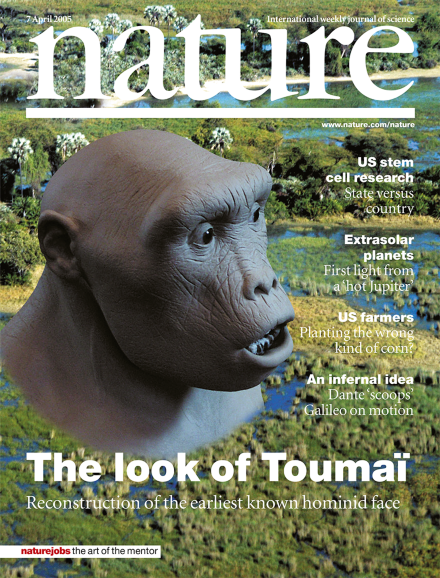Volume 434 Issue 7034, 7 April 2005
Editorial
News
News in Brief
News Feature
Correspondence
Commentary
Books & Arts
Essay
News & Views
Brief Communication
Article
Letter
Addendum
Erratum
Technology Feature
Prospects
Special Report
-
Model mentors
Career Guide:

